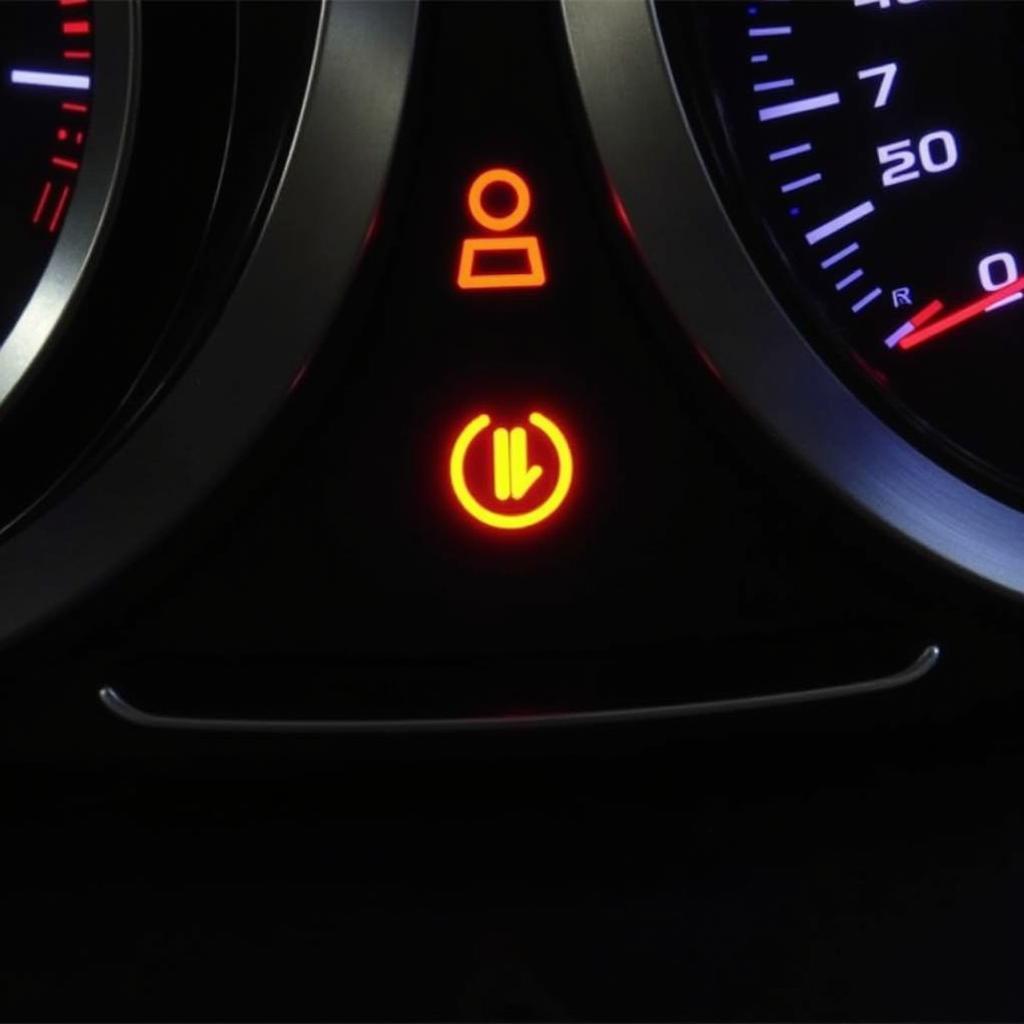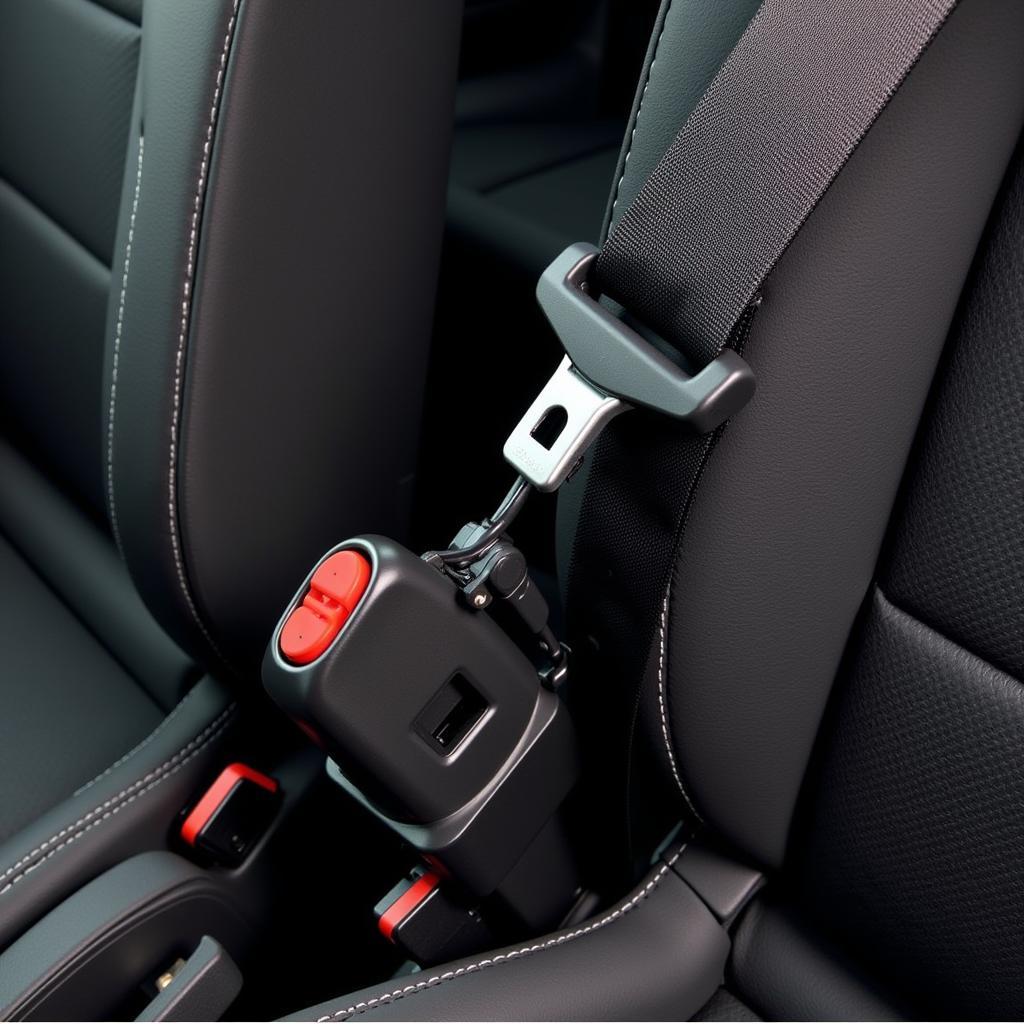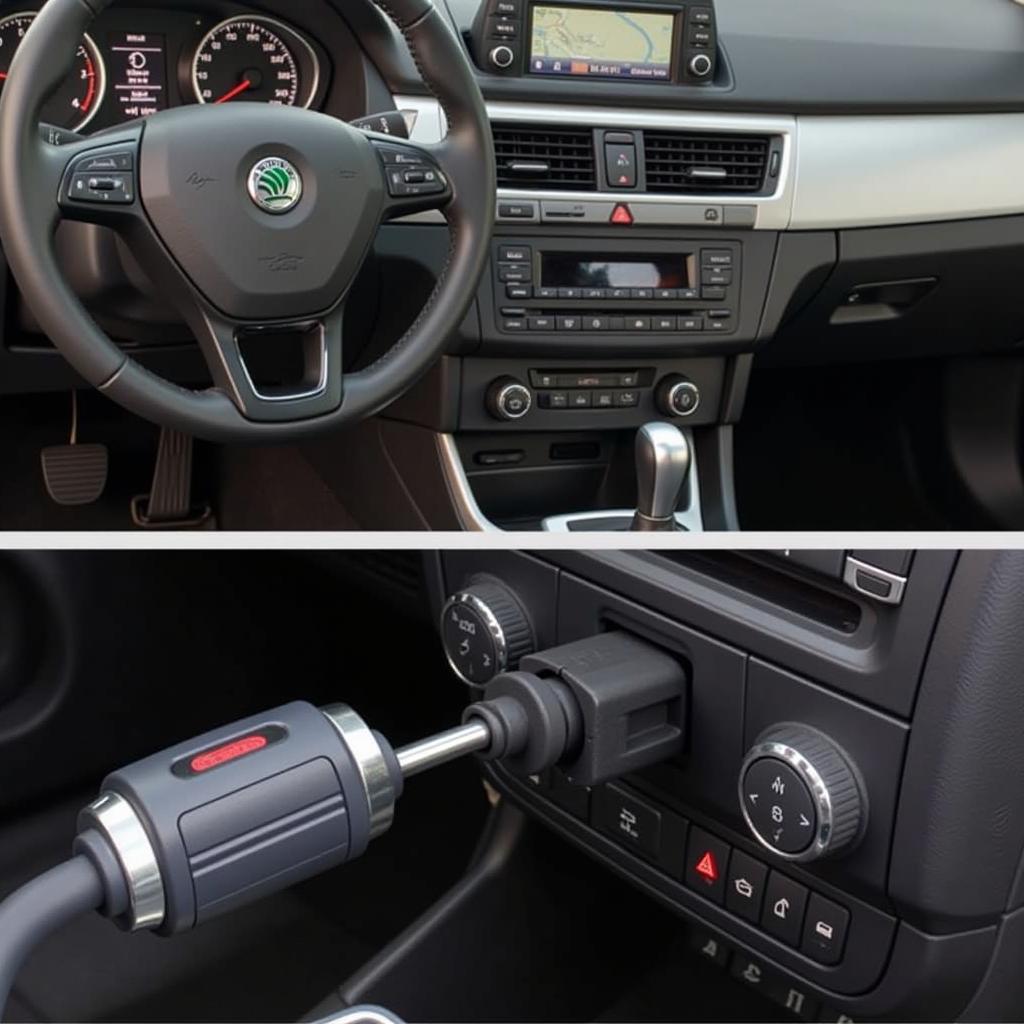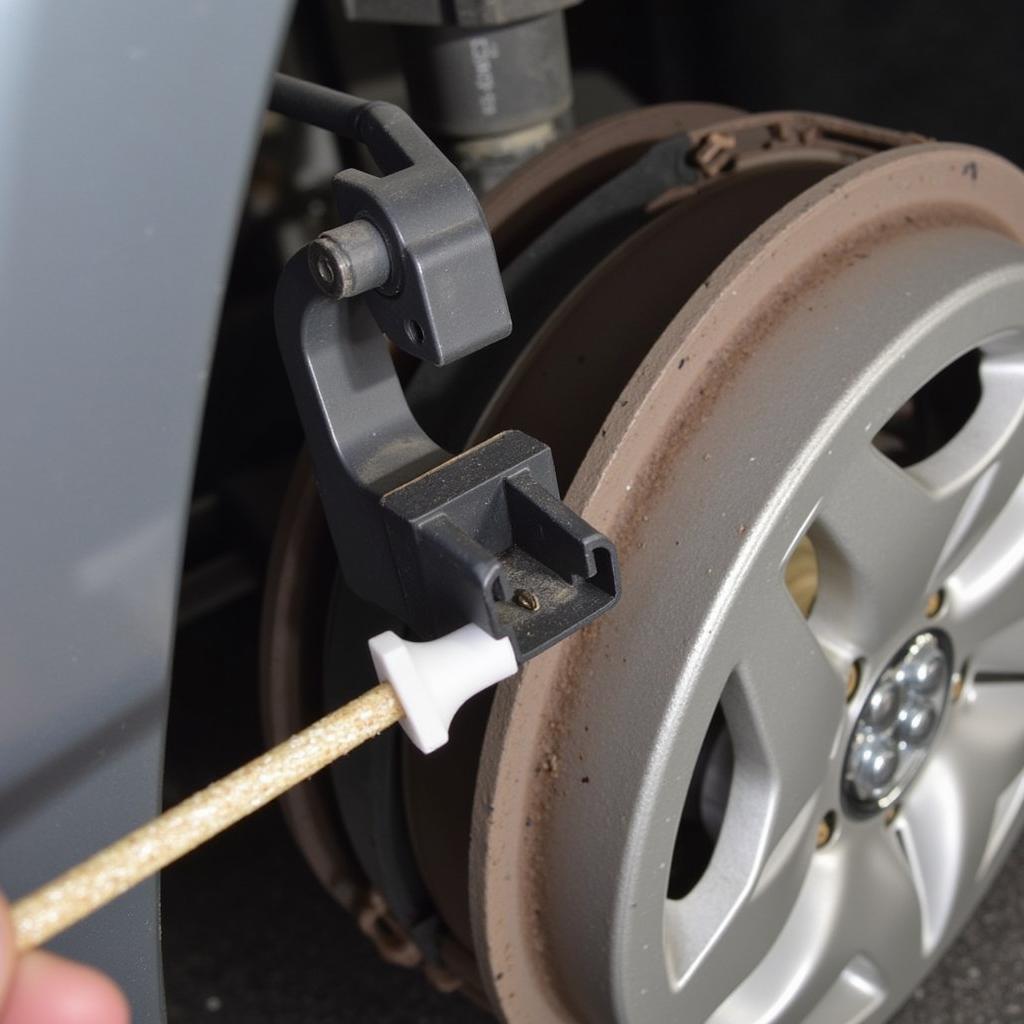Disabling the seat belt warning in a Skoda Octavia 2 is a topic frequently searched online, often raising safety concerns. This guide provides detailed information about the warning system, its importance, potential solutions, and the implications of disabling it. We’ll delve into the intricacies of this system, offering both technical insights and practical advice for Skoda Octavia 2 owners.
Understanding the Skoda Octavia 2 Seat Belt Warning System
The seat belt warning system in your Skoda Octavia 2 is a crucial safety feature designed to remind occupants to buckle up. It typically consists of an audible chime and a visual warning light on the dashboard. This system is active for both the driver and front passenger seats. Ignoring the warning can be distracting and, more importantly, dangerous in the event of a collision.
 Skoda Octavia 2 Seat Belt Warning Light on Dashboard
Skoda Octavia 2 Seat Belt Warning Light on Dashboard
Understanding how this system works is the first step towards addressing any issues you might be experiencing. While some modifications might seem tempting, remember that safety should always be your top priority. skoda octavia seat belt warning disable provides additional resources on this topic.
Why is the Seat Belt Warning Important?
Seat belts are a fundamental safety feature in any vehicle, significantly reducing the risk of serious injury or death in an accident. The seat belt warning system acts as a constant reminder, encouraging safer driving habits. The jarring chime and flashing light are intentionally designed to be noticeable, ensuring drivers and passengers are aware of their unbuckled state.
The Role of Seat Belts in Accident Prevention
Seat belts prevent occupants from being ejected from the vehicle during a collision. They also distribute the force of impact across the body, minimizing the risk of concentrated injuries. Numerous studies have demonstrated the effectiveness of seat belts in saving lives, making them an indispensable part of vehicle safety.
 Seat Belt Mechanism in Skoda Octavia 2
Seat Belt Mechanism in Skoda Octavia 2
Exploring Solutions for Skoda Octavia 2 Seat Belt Warning Issues
Sometimes, the seat belt warning system can malfunction, triggering the alarm even when the seat belt is fastened. This can be due to a faulty sensor, wiring issues, or problems with the buckle itself. In such cases, troubleshooting is necessary to pinpoint the root cause and find a suitable solution. indicator seat belt warning explores various seat belt warning indicators in different vehicle models.
Diagnostic Tools and Procedures
Modern vehicles, including the Skoda Octavia 2, rely on sophisticated electronic systems. Diagnostic tools can be used to read error codes stored in the vehicle’s computer, providing valuable clues about the malfunctioning seat belt warning system. These tools can pinpoint the specific component causing the problem, enabling a more targeted repair.
Software Updates and Reprogramming
Occasionally, software glitches can cause the seat belt warning system to behave erratically. In such cases, a software update or reprogramming might be necessary to rectify the issue. This usually requires specialized diagnostic equipment and software. skoda octavia mk2 seat belt warning disable provides further details on this process for the Mk2 model.
Safety Implications of Disabling the Seat Belt Warning
While some might consider disabling the seat belt warning as a solution to a malfunctioning system or simply to avoid the chime, it’s important to understand the serious safety implications. Disabling this system removes a crucial safety reminder, potentially leading to a decrease in seat belt usage and an increased risk of injury in an accident.
“Disabling the seat belt warning system can have dire consequences. Remember, seat belts are your primary defense in a collision,” advises John Miller, Automotive Safety Engineer at SaferAuto Solutions.
Legal Considerations
In many jurisdictions, tampering with safety systems like the seat belt warning is illegal. Modifying or disabling these systems can void your vehicle’s warranty and could result in fines or other legal penalties.
“It’s crucial to adhere to the safety regulations outlined in your local laws. Tampering with safety systems can not only be dangerous but also illegal,” warns Emily Carter, Legal Counsel specializing in automotive regulations.
 OBD Port for Diagnostics on Skoda Octavia
OBD Port for Diagnostics on Skoda Octavia
Conclusion
The seat belt warning in your Skoda Octavia 2 is a critical safety feature. While addressing malfunctioning systems is necessary, disabling the warning altogether is highly discouraged. Prioritize your safety and that of your passengers by ensuring the system functions correctly and using your seat belt every time you drive. Remember, a few seconds to buckle up can make a life-saving difference.
FAQ
- What causes the seat belt warning light to stay on even when the belt is fastened? A faulty sensor, wiring issues, or a problem with the buckle itself could be the culprit.
- Can I disable the seat belt warning myself? While some methods exist online, we strongly advise against disabling this crucial safety feature.
- Is it illegal to disable the seat belt warning? In many jurisdictions, tampering with safety systems like the seat belt warning is illegal.
- How much does it cost to fix a malfunctioning seat belt warning system? The cost varies depending on the underlying issue and the labor rates of your chosen repair shop.
- Where can I find reliable information about Skoda Octavia 2 seat belt warning systems? Consult your owner’s manual or contact a qualified Skoda technician.
- Can a software update fix the seat belt warning issue? In some cases, a software update can resolve software-related glitches affecting the warning system.
- What should I do if the warning persists even after troubleshooting? Contact a qualified auto technician for a thorough diagnosis and repair.

